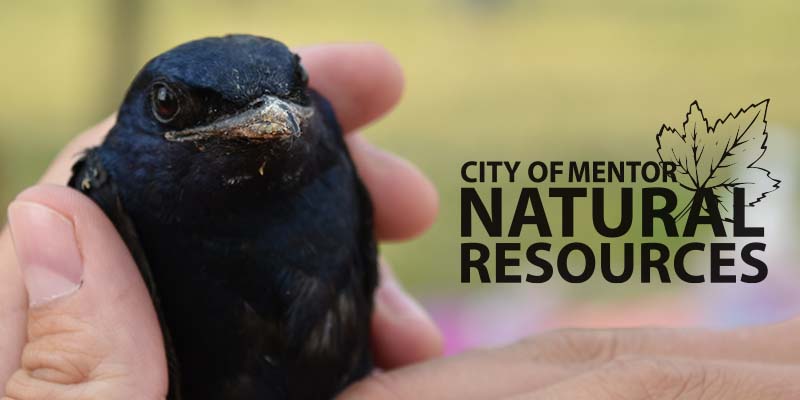
Our natural places offer outstanding opportunities for birding, hiking, kayaking, fishing and other outdoor adventures. From waterways and wildlife to trees, invasive species and parks, the Natural Resources Division is dedicated to the preservation, conservation, study and management of the city’s natural areas.
Contact the City of Mentor Natural Resources Division with questions at (440) 974-5717 or email [email protected].
Stay in touch with us on Facebook at Mentor Nature.
DOWNLOADS
Avian Research in Mentor
The Mentor Lagoons Nature Preserve and Mentor Marsh State Nature Preserve have turned into one of the best birding destinations in Northeast Ohio after restoration work began in 2004. The restored habitat provides great stopover habitat for migrating birds and provides excellent food resources for nesting marsh and forest birds. The upland forest within the Lagoons serves as one of the more important refueling areas in the region due to its proximity to Lake Erie. This body of water creates a barrier as migrants head north to their breeding grounds, and back south to their winter grounds. Mentor naturalists have begun a migratory bird banding project to research species diversity, population changes, and vegetative preferences within the preserve. Each bird is caught in fine nylon nets located within the vegetation. Biologists then safely extract the bird and put an aluminum band with a nine-digit number on the bird. This unique identifying number is entered in an online database, so information about that bird can be retrieved if it is recaptured anywhere in the Americas. This project is open to the public on Fridays in May and September from sunrise until 6 hours thereafter. Two special banding events will also take place on a Saturday in Fall/Spring (registration required). For more information about bird banding see our Facebook at “City of Mentor Natural Resources,” or contact [email protected]

Top Hotspots in Mentor
Mentor Marsh State Nature Preserve-Cleveland Museum of Natural History
- Access via Zimmerman Trail near Shipman Pond
- Excellent spot for 30 plus warbler species in spring
- Access via Wake Robin Boardwalk off Woodridge Ln.
- Target species include Virginia rail, sora, savannah sparrow, sandhill crane
Mentor Lagoons Nature Preserve-City of Mentor
- Panoramic view of the Marsh and great for photographers
- Close views of wood ducks, purple martins, great egrets, yellow warblers and more
- Head north along forested trail: targets include indigo bunting, Baltimore oriole, american redstart, and northern waterthrush (in migration).
Springbrook Gardens Park-City of Mentor
- Consists of early successional and wetland habitat for grassland species
- Within the floodplains look for breeding tree swallows, eastern bluebirds, and spotted sandpipers
- During migration uncommon grassland species such as dickcissel, snow bunting, bobolink, and Nelson’s sparrow have been spotted
Headlands Dunes State Nature Preserve-Ohio DNR and DNAP
- An excellent spot for shorebirds during spring and fall migration. Species such as the federally endangered piping plover have been seen on this beach
- The brushy woodlots back from the beach provide excellent habitat for migrants such as the willow, alder, and olive-sided flycatcher as well as Canada and magnolia warblers.
Birding Basics 101
Many people love watching birds from their backyard feeders or hearing the spring songs as many birds migrate back to our area. But, how does one learn what species they are seeing or how to identify them?
Identifying Equipment: The first thing to do is get a decent pair of binoculars, one which you can actually see the details of the bird clearly and doesn’t strain your eyes. Starting with a pair around $130 will make a world of difference. Focus on magnification of 8×42 or 10×42. Second, get yourself a good bird guide such as Sibley Birds East or Kaufman Field guide to Birds of North America. Another great option is the (Apple/Android) app “Merlin Bird ID,” designed by researchers at Cornell University. You can plug in different identifying characteristics such as size, shape, and behavior to narrow down your options. This app also has sound recording ID which is helpful, but should not be used as the sole identification for a bird.
Finding a “Hotspot” to go Birding: By far, the best resource for this is eBird.org. This site has dramatically changed birding and citizen science worldwide. Once here, you can make your own account and keep a running log of your bird species and where you saw them. Start by clicking on “explore hotspots.” You can search by a region or city and determine where the most species are seen by location. For example, Mentor Lagoons shows that over 250 species have been seen there and you can click on the hotspot to see what other birders are seeing. You can also “explore species” by entering in a species you may have seen such as downy woodpecker. eBird will then load up some nice photos and even audio files.
Describing the Bird: The best way to locate birds is by listening for calls. Try to key in on chip notes or songs and look for some movement with your naked eye. Once you have a bird in your binoculars or camera, try describing mentally to yourself what you are seeing. What color is the head, back and breast? What is the general shape and size of the bird? Does the bird have a long thin beak, or a larger thick beak like a cardinal? What kind of behavior is the bird exhibiting-Is it on the ground, in water, or foraging high in the forest canopy? Once you have done this, try getting a photo to help you with your ID later on.
Identifying the Bird: Look the bird up in a field guide to help make your ID. Look at the species’ range map to determine if this is a bird commonly found in your area. If it’s not, what other options are there? Is the bird described in your guide found in a habitat that matches where you saw the bird? Try looking at what other birders have seen at this area on eBird.org. You can also post your photos to a bird identification group, which are common on Facebook.
Join a Birding Group: One of the best ways to learn your birds is to go on out with experienced birders. The Mentor area has a great group of people in the Blackbrook Audubon Society who meet regularly and put on a numerous field trips. The City of Mentor also hosts bird walks in spring, fall, and winter.
Learn more about the wonderful birding opportunities available in Mentor.
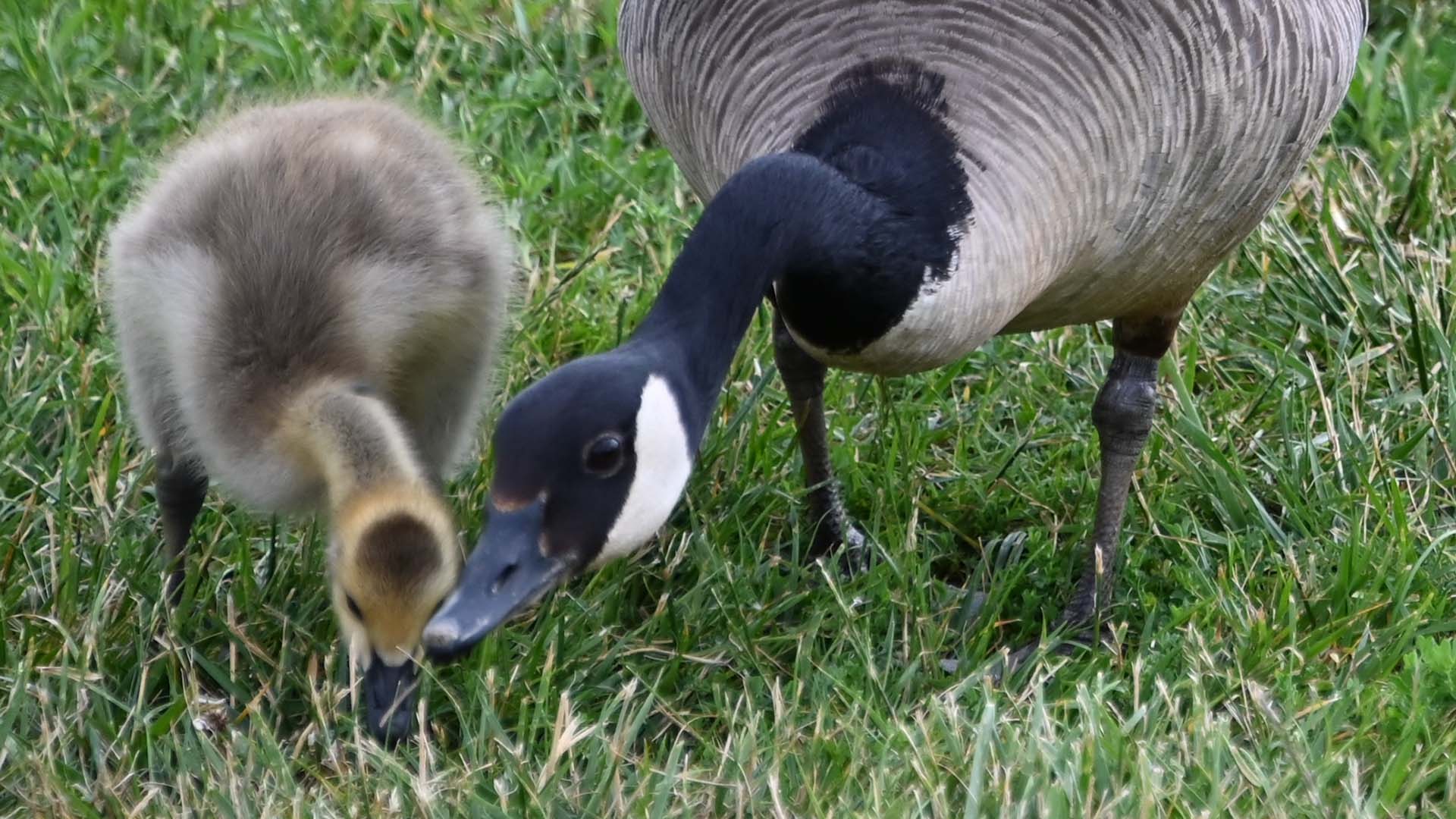
History of Canada Geese Populations
By 1950 populations of Canada geese were nonexistent in Ohio and nearly extinct worldwide due to unregulated harvest of birds and eggs and habit loss. In 1956, the Ohio Division of Wildlife introduced 10 pairs of Canada geese in state wetlands. This along with the Migratory Bird Act, harvest regulations, and state legislature helped geese populations rebound. It is estimated that the resident Canada goose population is currently around 150,000 birds, with many more migrants throughout the year.
Negative Impacts of Geese
- Geese can leave large amounts of waste across a landscape. Their fecal matter carries pathogens such as giardia and coliform. Their waste can also contribute to excess flow of nutrients into a waterbody through stormwater, thus resulting in excessive algal growth and lower oxygen content in water. Both can negatively impact aquatic life.
- Individuals may become aggressive towards humans and pets when they are nesting or looking after young.
- Overgrazing of vegetation
Protections
Canada geese are protected in the United States by the Migratory Bird Treaty Act. It is illegal for any person, agency, or organization to take or attempt to take (pursue, Hunt, Shoot, Wound, Kill, trap capture, or collect), any bird, nest, or egg outside of the regular hunting season without a special permit from the Ohio Division of Wildlife and the U.S. Fish and Wildlife Service.
As established by Ordinance No. 23-0-077 Canada geese are considered a ‘Nuisance Health Risk Animal” in the city of Mentor. As established by Ordinance 505.21 “No person within the limits of the City shall knowingly feed and/or harbor any nuisance health risk animals”. Violation of this ordinance results in a fourth-degree misdemeanor.
Tips to Deter or Haze Geese from an Area
Do Not Feed Geese. Feeding geese can lead to malnourishment and dependency on humans.
Geese thrive in areas with regularly mowed grass. If you have a pond, consider letting vegetation around the waters edge grow 2 ft+. This makes it difficult for geese to enter the water and it provides cover for predators, making geese more hesitant to loiter near a pond.
Geese also need space to land so planting trees and shrubs may make it more difficult for geese to enter an area.
Hazing is a method to startle or scare geese away from an area. Hazing can be performed by making loud noises/using sound devices, shining a green laser light in their direction, or chasing them off (or letting a dog do so).
For hazing to be effective, it must be done consistently prior to nesting season and after their flightless molt period (in summer). Newly hatched goslings cannot fly. This coincides with adult flight feather molt or feather replacement, which leaves adults flightless. This is generally June and July. Once a goose has established a nest with eggs, it is nearly impossible to get them to leave the property until after both the goslings and adults can fly again.
For additional information, visit the Ohio Department of Natural Resources website.
Once somewhat rare in our area, an increasing number of coyotes have been spotted in Mentor over the past few years. Coyotes are naturally timid creatures. Seeing them or hearing them howl is not a cause for concern.
Being approached or followed by a coyote, or a coyote directly entering your path is abnormal and should be reported.
- ARTICLE: Have Concerns About Coyotes?
- Ohio Department of Natural Resources Coyote Page
- ARTICLE: Wildlife Center Stage – The Coyote
- Coyote Fact Sheet
To report a coyote sighting, or if you have any questions, contact the City of Mentor Natural Resources Division (440) 974-5717 or email [email protected].
If you notice a dead animal on a city roadway, please contact Mentor Public Works at (440) 974-5781 weekdays from 7 AM to 4 PM. During all other times, call the Police Department’s non-emergency number at (440) 255-1234. The city will not collect dead animals from private property.
Deer Management
Deer are classified as nuisance animals. It is unlawful to feed the deer in Mentor.
Over the years, overpopulation resulted in a substantial increase in deer/vehicle accidents, as well as the growing destruction of plants and trees.
One of the goals of Mentor’s ongoing Deer Management Plan has been to reduce the number of deer/vehicle accidents. With grant funds received from the Ohio Department of Transportation, the city agreed to test Deer Deter units. The devices have been known to reduce accidents in other states by as much as 70-90%. Mentor is the first city in Ohio to use the system.
Since 2013, the City has also implemented a monitored hunting and culling program to maintain herds at sustainable levels. The result has been a marked reduction in traffic accidents as well as improved biodiversity throughout the city.
- 2025/26 Deer Hunter Application Packet PDF | (MS Word)
- Deer Harvest Report Form
TESTING LOCATIONS
The Whitetail Mann, Steve Mann
Madison (440) 728-6927 – Call for appointment
Great Lakes Outdoor Supply
14855 N. State Ave, Middlefield
(440) 632-9151
Ohio Premier Archery and Sports
14980 S State Ave, Middlefield, OH 44062
(440) 632-8007
The City of Mentor recently passed legislation regarding the feeding and care of feral cat colonies. Interested Animal Welfare Organizations are required to register with the City. Additional information will be posted on this page as it becomes available.
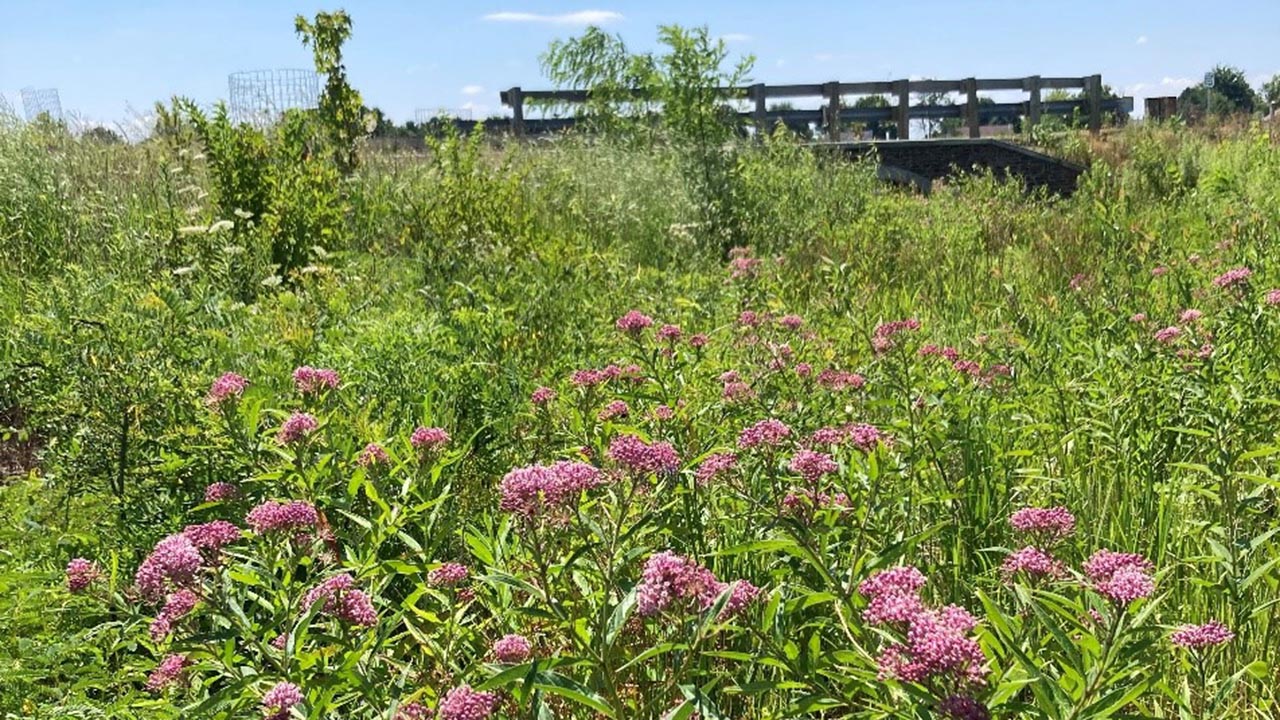
The City of Mentor strives to improve the habitat quality, biological integrity, and biodiversity of our natural areas. Springbrook Gardens Park is undergoing a multi-phase restoration project to convert the diked stream to a natural flowing system with floodplains. The floodplains have been planted with native trees, grasses, and plants which help absorb pollutants in the stream and slow the flow of the water during flood events. This habitat also provides food and shelter for many species of birds, mammals, and pollinating insects. Bird species such as song sparrow, savannah sparrow, spotted sandpiper, eastern bluebird, and tree swallow nest here. The wildflowers along the stream and hillsides provide excellent food sources for monarchs, dragonflies, hummingbird moths, and other pollinators in decline.
The Natural Resources team has taken on a variety of invasive plant management projects throughout our parks. At Wildwood Cultural Center, plants such as Japanese pachysandra, English ivy, lesser periwinkle, and burning bush are being pulled as they spread along the forest understory. These invasive plants quickly outcompete native wildflowers and grow in dense mats, providing little biodiversity. As one of the best parks for spring ephemeral wildflowers in Lake county, it is vital to eliminate these invaders.
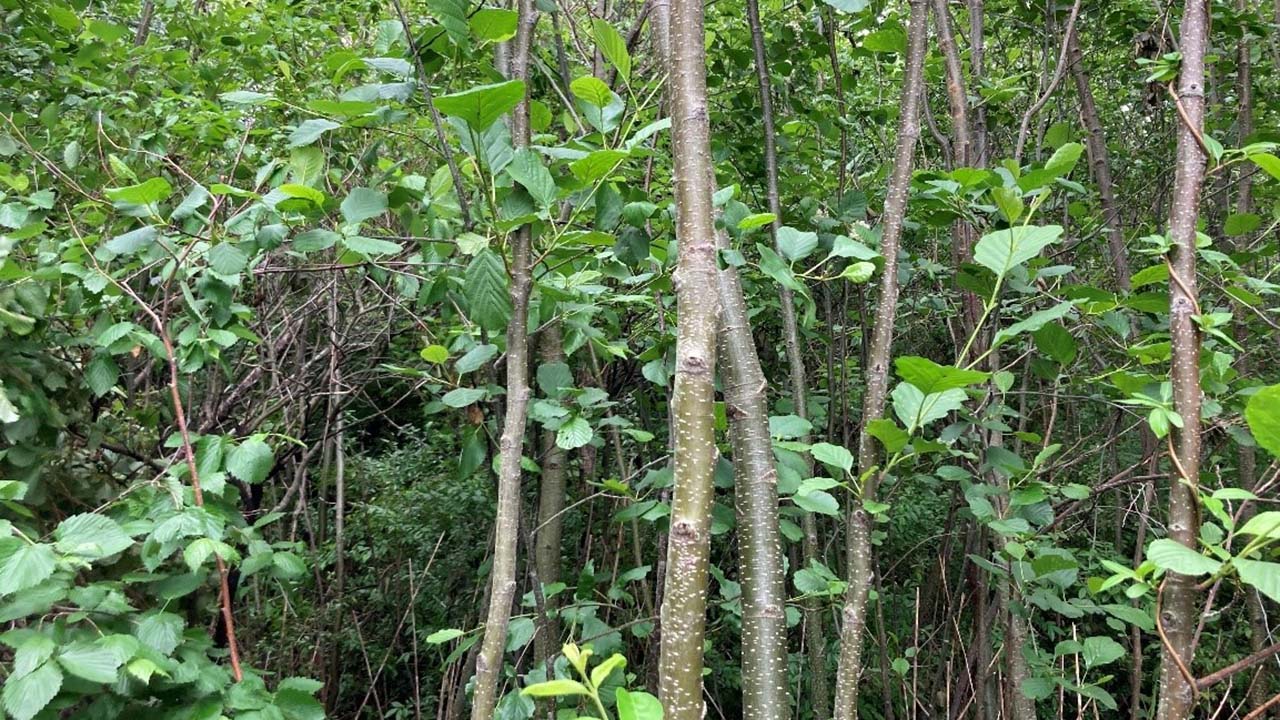
Mentor Lagoons Nature Preserve also contains an abundance of invasive plants. Particularly concerning is the spread of multiflora rose, Japanese honeysuckle, and Chinese/common privet within the forest understory. These plants spread quickly, reduce biodiversity, and outcompete native shrubs such as flowering dogwood, buttonbush, and spicebush. While these species will never be fully eradicated, it is important to reduce them as much as possible. An equally destructive tree, the European alder is also causing havoc on the ecosystem. This tree has taken full advantage of the ash die-off from the emerald ash borer. Areas where native Ash species have died are being replaced with the quick-growing, invasive alders. To minimize the spread, mature seed-producing alders are slowly being removed from this park. Without action, the Lagoons would eventually degrade into a monoculture of this invasive tree.
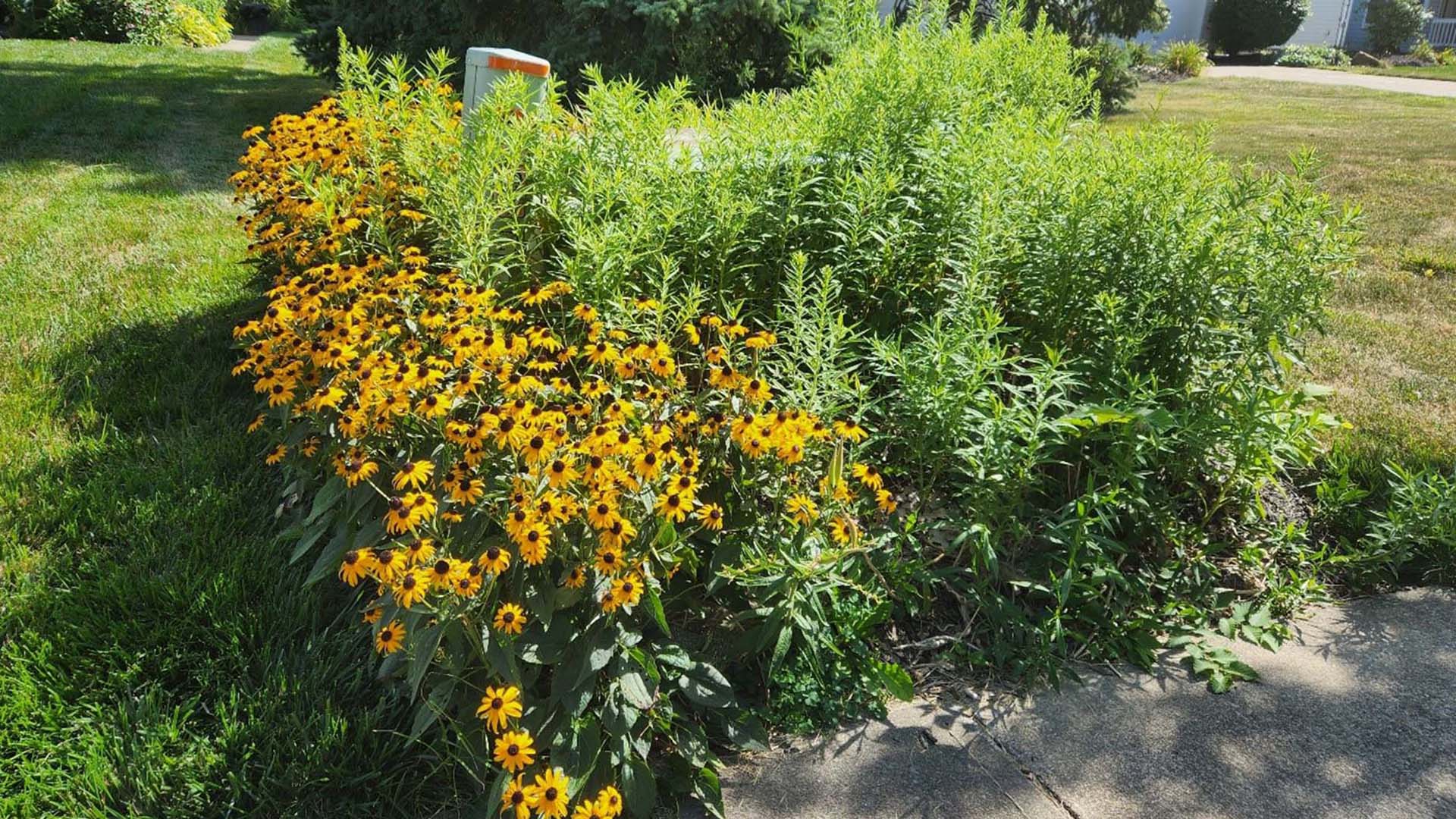
We all want our yards to be the best looking one in the neighborhood. A common misconception with planting natives is that they are messy and attract undesirable insects. While they do attract insects, they attract many species essential for hundreds of plant species to survive. These insects are responsible for pollinating most of our crops in the U.S. Calling native plants messy is misguided especially in comparison to non-native plants, which can escape our gardens and spreading into parks and natural areas.
What are Non-native Plants?
Non-native plants are ones that do not originate from our region and lack nutrients our native wildlife needs to survive. When a non-native plant lacks predators to keep their growth from becoming excessive it is known as an invasive plant. Some examples include various species of honeysuckle, multiflora rose, common privet, purple loosestrife, and so many more! If it has European, Japanese, or Chinese in the name, it’s surely non-native to Ohio. Some of the most common non-native species that provide little to no benefit to pollinators are turfgrasses. By converting sections of our lawn back into native wildflower beds and rain gardens, we are providing food resources for many of species that are in huge decline. If our pollinators fail, our ecosystem fails too.
What Native Plants are for You?
Choosing plants that are adapted to our region allows for easy care. Of course, some plants are better suited for varying conditions so it’s always important to understand the soil type, moisture, and amount of sunlight your garden receives. Choosing mountain mint, black-eyed Susan, and purple coneflower provide essential resources for many insects and birds. To attract pollinators and butterflies, consider planting species such as butterfly, common, and swamp milkweed. If you’re looking for medium-sized woody trees, arrowwood viburnum, serviceberry, and dogwood species are great landscape options that will attract birds. For shade and overstory trees, red and white oak are highly beneficial and long-lived.
For more information about native plants, contact Mentor Natural Resources at (440) 974-5717.
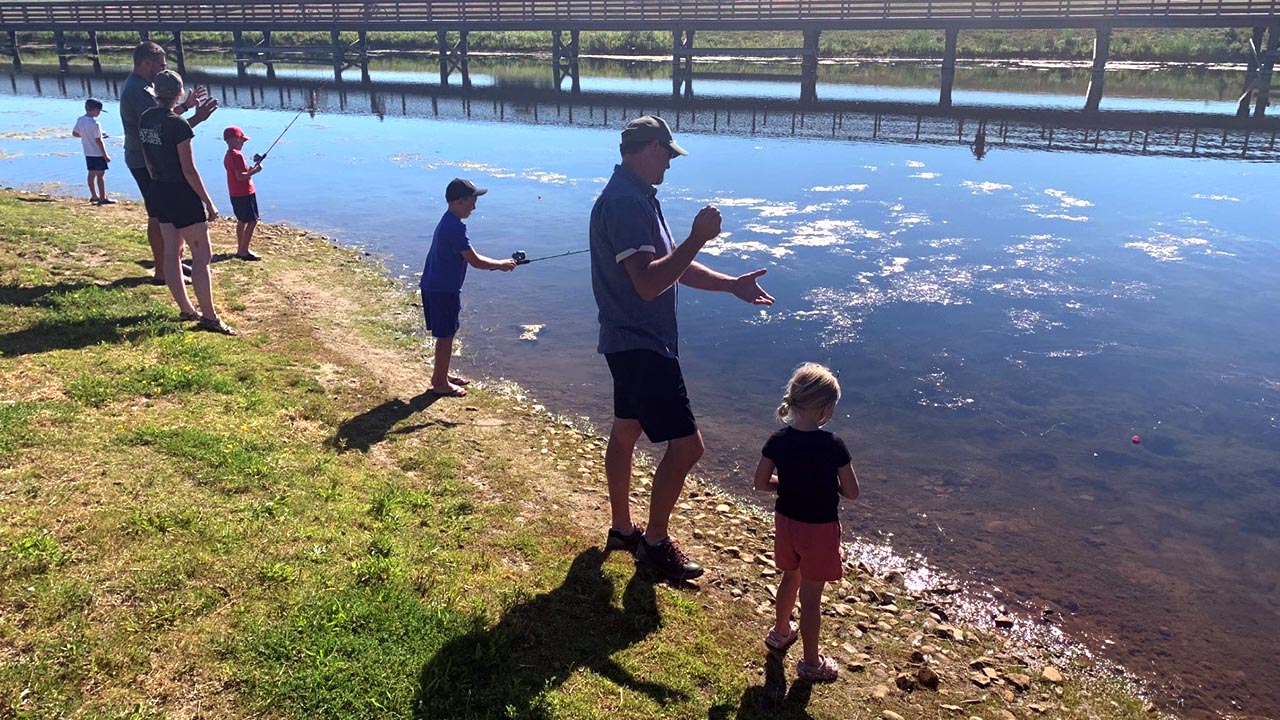
The Natural Resources Division offers numerous educational opportunities for all ages. From nature walks, bird banding demonstrations, and crafts with the kids, you can enjoy nature from all aspects. Click here Register for a Class or Program – City of Mentor, Ohio to see available events. The Natural Resources events can be easily found by typing nature in the filter bar.
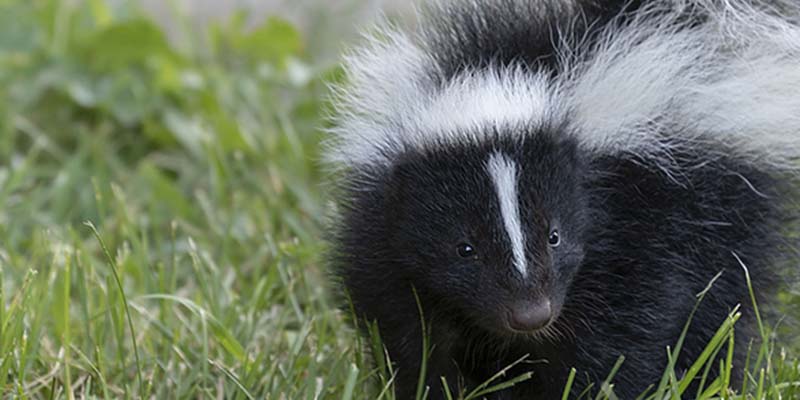
The City of Mentor does not provide any sort of nuisance animal trapping services for residents. Commercial trapping services can be found at the following link:
According to the Ohio Department of Natural Resources, more than 75% of the U.S. population lives in an urban area. Most urban wildlife, such as skunks, raccoons, opossums, and groundhogs are opportunistic. They thrive in suburban areas with quick access to food and shelter. To prevent these animals from moving into your yard, take these steps: ensure that garbage and compost bins are securely closed, do not leave pet food or water unattended,
Peak activity for nuisance wildlife occurs from late February (when many animals come out to forage), and early summer when they are feeding young. Actual conflicts between people and urban wildlife are rare. Residents are often concerned about skunks, but they rarely spray people even though they are quite common. Skunks will only spray dogs in self-defense, usually when charged. The best way to avoid this is supervising dogs during early morning, and dusk hours. Skunks are crepuscular, most active right before and after sunrise/sunset. Avoid letting your dog run free during this period. Surprisingly skunks do not like strong smells. If they are moving in around your deck, try spraying an ammonia solution in the problem area.
The reality of where we live is that we must co-exist with wildlife. Our wildlife populations are healthy and abundant, and removing one individual is likely not the solution. In some circumstances, such as the indiscriminate removal of coyotes, it could make the situation worse. Many species provide great benefits to our ecosystem that we don’t think about. Skunks eat a great variety of pests such as beetles, voles, and various larvae. Bats are important in that they remove pesky insects from our backyards. Preventing wildlife from becoming dependent on humans, structures, and food is key. For more tips on how to deal with nuisance wildlife, contact the Ohio Department of Natural Resources at 614-793-9453.
Spring Migration is Special in Mentor
By Joel Throckmorton When people think of birding destinations, Lake County probably isn’t the first spot that pops into anyone’s mind. It is, however, one of the best locations in the entire state of Ohio [...]
Celebrate Earth Day in Mentor
Join the Mentor Natural Resources Division on Sunday, April 27th, 2025, from 10:00 AM to 2:00 PM at Springbrook Gardens Park as we celebrate Earth Day! Guests can explore the splendor of Springbrook Gardens Park on a [...]
Preserve & Protect
The Mentor Lagoons Marina and Nature Preserve is the crown jewel of Mentor’s 1,200 acre parks system. With over 200,000 visitors each year, it’s among the most popular of our parks serving boaters, hikers, bikers, [...]
Occurrences of Bird Flu in Birds Recorded in Mentor, Ohio
Over the past several weeks, the City of Mentor Natural Resources Division has received inquiries related to dead waterfowl in our city. These deaths are generally attributed to highly pathogenic avian influenza (HPAI), also known [...]
Fall is Fantastic in Mentor
Crisp, clean air, beautiful colors and falling leaves are some of the hallmarks of Autumn in Northeast Ohio. In Mentor we are fortunate to have over 1,200 acres of parkland to enjoy year-round. While fall [...]
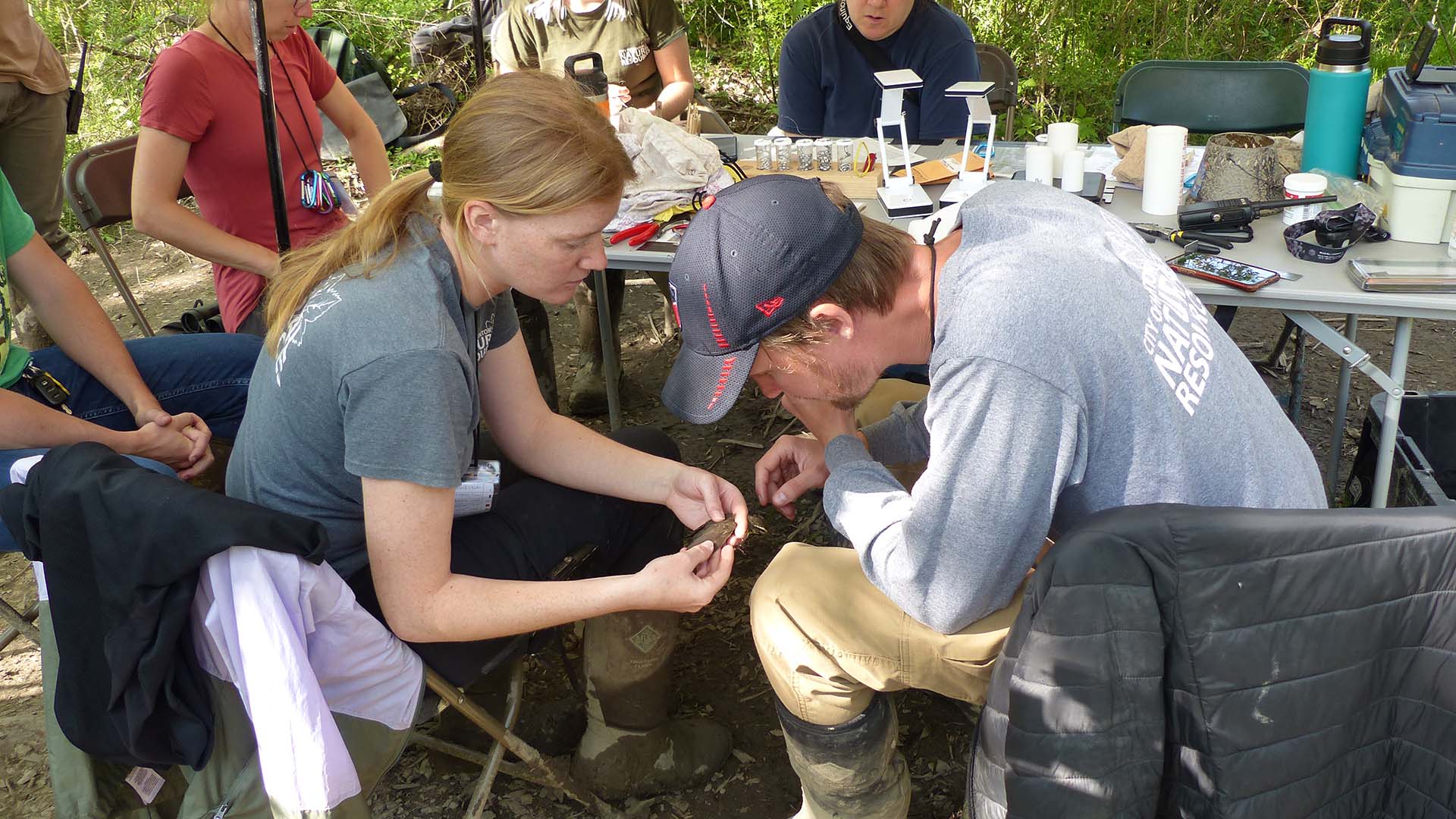
Keeping our parks healthy is a big job and we cannot do it with out you! We are looking for passionate individuals who value Mentor parks. This is also is a great opportunity for community service requirements for students and scouts. If we all work together, we can make a difference in our park’s ecosystems.
Contact us at [email protected] or (440) 974-5717, to see how you can help our natural areas!
Volunteer Opportunities
Hand Pulling Invasive Plants
- Plants such as garlic mustard, Japanese pachysandra, and English ivy are invading our parks, especially Wildwood Cultural Center. Join our team to pull these plants in early spring.
Migratory Bird Banding
- Looking for those with strong bird identification skills both visual and auditory to assist with the bird banding station within the Mentor Lagoons Nature Preserve. This project began in the fall of 2021 and occurs from April-May and Sept-Oct.
European Alder Removal
- Our team uses chainsaws, brush cutters, and handsaws to remove the trees. We need help with treating stumps, dragging trees to piles or woodchipper, and hand sawing trees.
Removing Invasive Understory
- We use brush cutters to clear invasive plants such as multiflora rose, Japanese privet, and honeysuckle. We need help removing material that’s been cut to allow the team to cover more acreage.
Trash Removal
- To keep our parks beautiful, we ask for assistance in cleaning up our parks.
- Beach at Mentor Lagoons Nature Preserve
- Woods at Morton Park
- Wetlands at Springbrook Gardens
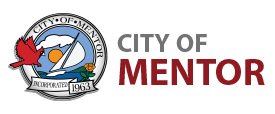
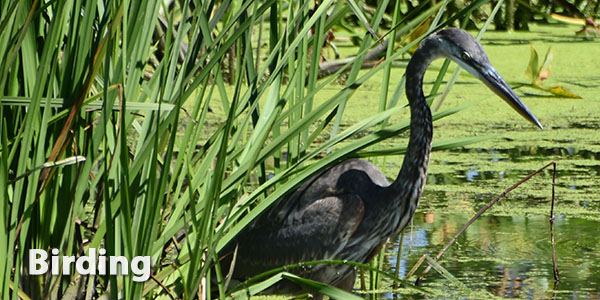

Connect with Mentor Rec